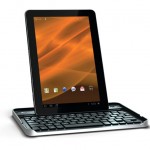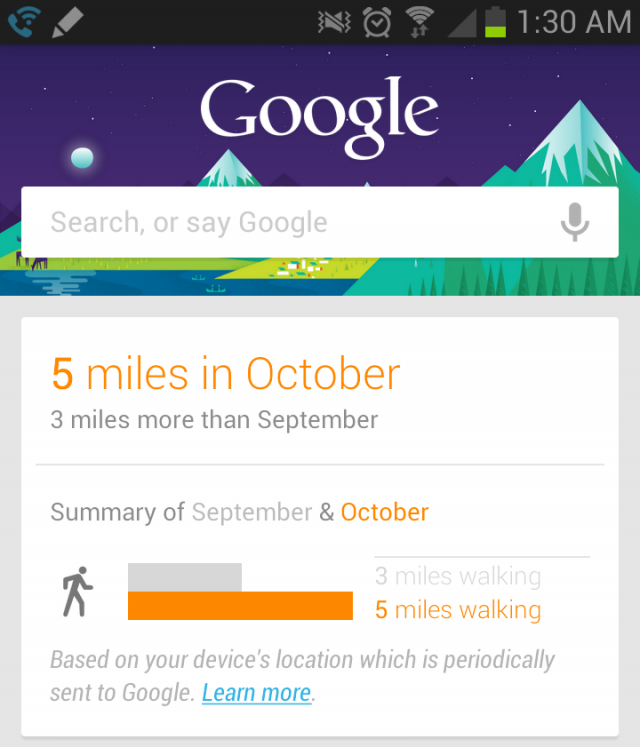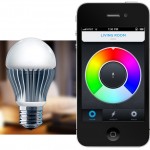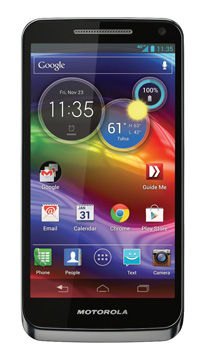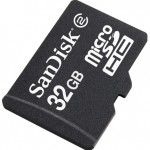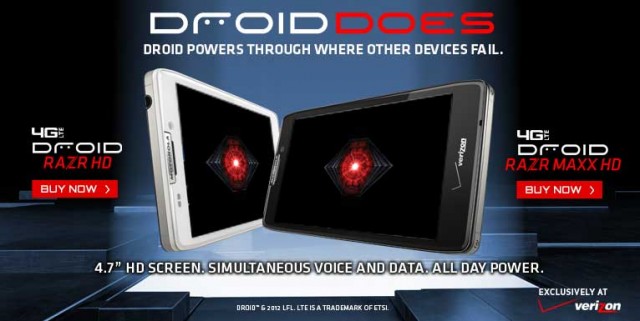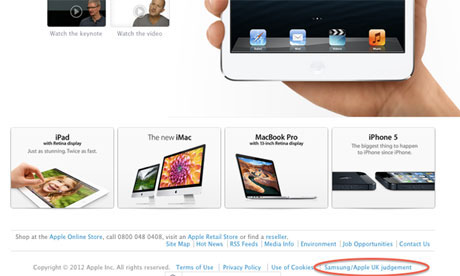Android Authority |
- Samsung Stratosphere 2 pic leaked, Verizon release is imminent
- Google’s Nexus 4 system dump is out and about – apps, wallpapers, ringtones and more up of grabs
- Microsoft to launch their own phone and copy Android’s notification tray in 2013
- Google Wallet Card coming soon for in-store purchases and withdrawals
- IDC: Android holds 75% worldwide smartphone market share in Q3, Apple’s iOS holds 14.9%
- Android 4.x now running on 28.5% of Android devices, Jelly Bean just 2.7%
- Samsung Galaxy Note 2 sales hit 3 million in 5 weeks, proving the haters wrong
- Supreme Court case may determine legality of re-selling apps and devices, and even alter the concept of ownership
- Sprint Flash will cost $129.99, arriving this month
- Samsung Galaxy Tab 2 10.1 with 4G LTE heading to Sprint November 11
| Samsung Stratosphere 2 pic leaked, Verizon release is imminent Posted: 02 Nov 2012 02:42 AM PDT
It's pretty obvious that slide-out QWERTY smartphones are not everybody's favorites, due to their "robust" bodies and mid-range specs. Still, students, elders and even businessmen tend to favor them, what with their added functionality and all. One of the most interesting QWERTY devices of 2011 has been Verizon's Samsung Stratosphere, which is getting ready for a refresh. Rumors about the second Stratosphere have been floating around ever since August, but now it's time to finally have a look at the new phone's design. The first Stratosphere 2 pic is not official, but does come from a very trustworthy source, notorious Twitter account @evleaks, so we'll take this one for granted. As expected, there aren't going to be many visual differences between the second Stratosphere and its predecessor, although the new phone's edges are much more rounded than before.
I know that's not a tweak to be crazy about, however there seems to be something better about the Stratosphere 2's overall look too. I'm not sure if it's just me, but the "noble black" of the first handheld might have been replaced with a darker and more distinguished shade of black, while the back side also seems a tad more elegant and smoother. The physical keyboard looks identical to the first, which is not a bad thing, while the four on-screen buttons have been kept, but are now differently placed. Evleaks mentions nothing about the device's features, but, based on previous rumors, we have an almost complete spec sheet lined – 4.3-inch Super AMOLED display, dual-core 1.5 GHz S4 CPU, 1 GB of RAM, 8 MP rear-facing camera, 4G LTE, Android 4.0 ICS. We also suspect the phone to come branded as a Galaxy device this time, while the Verizon release should happen by November 21. As for pricing, that’s still a very delicate subject. Anyone excited about the Stratosphere 2 now that we know how it will look? How much do you think Big Red will ask for this? Related Posts |
| Google’s Nexus 4 system dump is out and about – apps, wallpapers, ringtones and more up of grabs Posted: 02 Nov 2012 02:34 AM PDT
The inevitable has happened. With a few days left before its official launch, and with review units being sent out to some lucky hands, a Nexus 4 system dump has been uploaded online, giving everyone access to the phone's many Android 4.2 goodies. Those with the right set of skills can extract apps found on the system dump of Google's flagship phone and install them on their device, though some tinkering is obviously required. Seeing that the apps may not be fully compatible with older versions of Android, we suggest you take some extra precaution before getting your hands dirty. Things are less complicated if all you after is the phone's wallpapers, ringtones, sounds and videos. We've posted the wallpapers from the LG Nexus 4 above. If you want the complete system dump, you can hit the source below. Prior to the leaked files, we've gotten a taste of the latest Jelly Bean's keyboard app, which comes with a Gesture Typing feature. The system dump almost completes the Android 4.2 experience. Are you planning to be a proud owner of the Nexus 4? Related Posts |
| Microsoft to launch their own phone and copy Android’s notification tray in 2013 Posted: 02 Nov 2012 01:49 AM PDT
It’s safe to say that Windows Phone hasn’t taken off. Nokia recently reported that they sold just 2.9 million Lumia devices in Q3 2012. To put that number into some perspective, Samsung just announced that they sold 3 million Galaxy Note 2 units in 37 days. That’s right, one phone in Samsung’s massive portfolio managed to outsell Nokia’s entire Windows Phone lineup. According to The Wall Street Journal, Microsoft is aiming to turn things around in 2013. Their sources in Asia tell them that Microsoft is working on their own smartphone, but they can’t confirm whether or not the company plans to mass produce said device. Microsoft could very well just be doing some research, poking around to see what their hardware engineers can come up with, but our gut tells us that there’s something more to this story. Expect to hear more rumors about a “Surface Phone” over the coming months. In other news, Microsoft’s Thomas Fennel told developers attending the BUILD Conference that the company “rant out of time” with regards to the lack of a notification center in Windows Phone. His exact quote:
We all know Apple blatantly copied the Android notification tray when they launched iOS 5 back in October 2011. Now it looks like Microsoft is also going to do the same thing, though we don’t know when they’re going to bring it to Windows Phone. Microsoft typically updates their mobile OS in a tick-tock fashion. After a major update (Windows Phone 7) there’s a minor update (Windows Phone 7.5) and then there’s another major update (Windows Phone 8), so you get the idea. Will Microsoft’s phone, assuming it exists, be awesome? Looking at the Surface, it’s obvious that the company has incredibly talented designers. But will Windows Phone ever become more attractive than Android? That’s going to be a tough mountain to climb. Related Posts |
| Google Wallet Card coming soon for in-store purchases and withdrawals Posted: 02 Nov 2012 01:27 AM PDT
Online and mobile payment services like Google Wallet and Apple Passbook are innovating the payments space with features like tap-to-pay and loyalty programs. Google is adding another dimension to its mobile payment system, which might at first look like a step back, but is actually an innovative way to manage your mobile wallet. Google is aware that not all establishments accept tap-to-pay, and that NFC is not always necessarily the most convenient means to pay. As such, Google is introducing a physical card for accessing your Google Wallet account. A Google Wallet user tipped Android Police that he was able to sign up for a Google Wallet Card. Here are some interesting points:
Google Wallet users can order the card through the Wallet app and have it delivered straight to one’s home address, as the tipster has shared. But what’s even more interesting is that the Google Wallet Card will also give users the ability to deposit funds into one’s account or withdraw using an ATM machine. The service will also offer person-to-person money transfers, which could pose a serious challenge to online payment systems like PayPal. Another thing, because Google Wallet Card will not necessarily require NFC, this means users will no longer require carrier approval before their handsets can support NFC payments. As such, Google Wallet Card may also work with multiple platforms and not just Android. This might likewise pose a serious challenge to the ISIS payment system that carriers are developing among themselves. With a physical card, Google is set to dominate in both online and offline payments. Let’s see what competitors will come up with to challenge this latest development. Related Posts |
| IDC: Android holds 75% worldwide smartphone market share in Q3, Apple’s iOS holds 14.9% Posted: 02 Nov 2012 01:21 AM PDT
It's just another day at the office for Android handsets, kicking everybody else's behinds. According to research firm International Data Corporation (IDC), Android-powered handsets maintain their commanding lead over Apple's iOS devices and others in the global smartphone market for Q3 2012. Out of the 181.1 million smartphones that were shipped in Q3, Android handsets accounted for 75% of the total shipments with 136 million units shipped. It's a significant improvement over the last report, which puts its market share at 68%. IDC research manager Ramon Llamas said that Android continues to become to "growth engines of the smartphone market" and has "effectively outpaced the market" since its arrival in 2008. No prize for guessing who the biggest manufacturer is that has been dominating the landscape in the past year.
Apple sits in second place with 14.9% of the market share, down from 17%. The iPhone maker managed to ship 26.9 million smartphones in Q3. The recent release of the iPhone 5 should provide a nice boost to its numbers in the last quarter of the year. RIM's Blackberry and Nokia's Symbian are next on the list with 4.3% and 2.3%, respectively. Only 7.7 million Blackberry handsets were shipped in the quarter, but this was better than Symbian's 4.1 million units. Meanwhile, Microsoft's Windows Phone 7's market share grew to 2% with 3.6 million units. What do you think of the numbers? Will we see even better results for Android handsets in Q4? Related Posts |
| Android 4.x now running on 28.5% of Android devices, Jelly Bean just 2.7% Posted: 02 Nov 2012 12:58 AM PDT
Every two weeks, Google likes to update their Android Developer website with statistics about which Android devices are accessing the Google Play Store. Today they’ve updated that page. Here are the numbers you need to know: Android 4.1 Jelly Bean, the latest version of the operating system, is on 2.7% of all Android devices currently in use. Looking at Android 4.0 and Android 4.1 combined, those versions are on 28.5% of all devices. When you consider that Ice Cream Sandwich (4.0) is going to turn one year old later this month, it’s a bit disheartening to see penetration levels so low. As for the other versions, just 1.8% of people are using Android 3.0 Honeycomb, which is actually pretty great, because we all know that version of the OS was nothing more than a rush job Google pushed out to compete with Apple’s iPad. Android 2.3 Gingerbread is still on over half of Android devices in the wild, 54.2% to be exact. Do you guys remember when Gingerbread was announced? Let us refresh your memory: December 6, 2010. This fact bears repeating: Over half of the Android devices in use today use a two year old version of the operating system. Kind of pathetic, isn’t it? How can you make sure you always have the latest version of Android on your smartphone? There are three ways. One, buy a new phone every six months. If you have the money, then why not? Two, only use Nexus devices. They’re the first to get updates, and the hardware gets refreshed every 12 months, making it a more economical option. And finally three, stay on top of the Android ROM scene. Chances are that there’s a forum thread somewhere on the internet with a whole bunch of people dedicated to making sure the latest version of Android is on your device. You’ll void your warranty by flashing, but hey, there are worse things in life. Related Posts |
| Samsung Galaxy Note 2 sales hit 3 million in 5 weeks, proving the haters wrong Posted: 02 Nov 2012 12:23 AM PDT
When Samsung launched the original Galaxy Note back in 2011, we thought it was a joke. Who in their right mind would buy a 5.3 inch smartphone? We have no problem admitting that we were wrong and that our doubts were misplaced. People loved the jumbo sized form factor so much that the Note went on to sell over 10 million units as of mid August. Like clockwork, Samsung refreshed the Note almost one year after launching it at IFA in Berlin. How are sales going? According to Samsung’s Korean website, over 3 million units are now in the hands of consumers just 37 days after hitting the market. It’s funny because the new Note, with a 5.5 inch screen, is even larger than the old one! What’s even crazier is that the Note 2 isn’t even available yet in the United States. AT&T will start selling it on November 9th, and Verizon will get it either on the 27th or the 29th. It’s also going to be offered by several other operators, but let’s be realistic, you’re going to want to go with the big boys because of their respective 4G LTE networks. Should you buy the Note 2? If you can put up with the size, it’s easily the best Android smartphone currently on store shelves. That’s going to change later this month with the LG Nexus 4, but then again some of you will really want that extra 0.8 inches of screen real estate. Still on the fence? Read our review of the Note 2! Related Posts |
| Posted: 01 Nov 2012 07:08 PM PDT  Do we really own the devices that we buy? Or are we just licensees who cannot re-sell our phones, tablets and computers? Should you be able to re-sell apps, games, e-books and just about any material that you have bought? We asked this question earlier this year, raising a few points for and against the argument. The doctrine of fair use says you can legally repurpose any content or material for academic or personal use. The doctrine of first sale says you can lend or re-sell copyrighted goods without interference, for as long as you “own” the copy. But copyright holders are always challenging these principles, saying these negatively affect their businesses. First that comes to mind are the grey-market importations of books aimed at reducing the cost of a university education. Then there’s also the re-sale of content that comes with an e-book reader or any other computing device — which may include smartphones and tablet computers. With the prevalence of digital media, the issue also becomes relevant in light of being able to re-sell apps and content that you have bought. There is a case currently pending in the U.S. Supreme Court that may eventually determine whether we, as consumers, can legally re-sell these goods. Kirtsaeng vs John Wiley & Sons is currently the highest-stakes intellectual property dispute of the year — even bigger than Apple vs. Samsung — because it can potentially change the notion of ownership in America. Arguing for first-sale is Thai-born Supap Kirtsaeng, who bankrolled his university education by importing books from Thailand and re-selling these online in the U.S. market, thereby undercutting the local retailers and publishers. John Wiley & Sons took notice, and sued Kirtsaeng for copyright infringement, and has so far won in the lower courts. If the Supreme Court rules for the publisher, it will mean that re-selling of goods will be illegal. No more grey-market books. No more garage sales. No more re-selling of your Kindle Fire with the e-books inside. Planning to sell your DVD collection? You might end up going to jail. Why this may be important to youThis might also have a significant effect on the online goods marketplaces that have built their business upon downstream commerce, such as eBay, Amazon and the like. But I think what will affect our primary audience more is the possibility that we may no longer be legally allowed to re-sell our mobile devices. Manufacturers can potentially claim their devices are protected by copyright, and therefore cannot be re-distributed in secondary markets. Omega successfully argued for this, after they claimed that a small engraved brand on their watches is copyrighted material. Omega won their case against Costco, which sold brand new Omega watches cheaper after re-importing these from overseas. Earlier, the courts ruled that the first-sale principle only applied to products manufactured within the U.S., and therefore all goods manufactured overseas are not covered by the principle. But with many goods manufactured abroad nowadays — including electronics devices — this could mean the first sale principle will no longer apply to such goods. Can we legally re-sell apps, phones and tablets?The first arguments were heard by the Supreme Court last Monday, and the focus then was on two things. First is the case for offshore manufacturing. Kirtsaeng’s lawyers argued that upholding the decision for Wiley & Sons will be a strong incentive for manufacturers to offshore their operations, because they will then have better control over secondary markets. Second is the legality of resale or display of a copyrighted item. This will imply that, for instance, a Toyota car sold the U.S. cannot be legally re-sold by the first “owner” without first seeking consent from Toyota itself, or that an artwork cannot be legally displayed by a museum without the author’s or his representatives’ consent. We expand our argument to cover mobile devices, given that manufacturers can claim their devices contain intellectual property that cannot be redistributed. Our smartphones, tablets media players and computers contain intellectual property within the apps and software, and even the proprietary chipsets and hardware design. Right now, the first sale principle means you can re-sell these items because you have bought them, except perhaps for any apps or e-books that cannot be sold without first deleting other copies. But with the upcoming Supreme Court ruling, your “purchase” of a device might actually just mean you are only licensed to use the device, but that you don’t actually own the technologies therein, because these are protected by intellectual property rights. The Supreme Court is trying to be fair with its decision-making process, in particular trying to find a viable middle-ground. We will be watching developments on this case. Related Posts |
| Sprint Flash will cost $129.99, arriving this month Posted: 01 Nov 2012 02:49 PM PDT
Back in July, we reported on the upcoming ZTE Flash. After that, the phone seemed to promptly disappear. Now it’s back on the radar, although it has had its name changed to the Sprint Flash. The Sprint Flash will feature a 4.5-inch touchscreen, a 1.5 GHz dual-core processor, 1 GB of RAM, a 1,730 mAh battery and 8 GB of internal storage space. The Flash features a 12-megapixel rear-facing camera and a 1-megapixel front-facing camera, and runs Android 4.0 Ice Cream Sandwich. There is no word yet on whether the device will be seeing an update to Jelly Bean. There are rumors that the Sprint Flash will have a 720p HD display and that the processor will be a Snapdragon S4. These were the rumored specs according to the leak back in July, and seeing as everything else seemed to be true, it seems like that these rumors will be true as well. The Sprint Flash is supposed to launch this month for $129.99 with a contract, or $450 with no contract. This is a decent price for the features, so it will be interesting to see how well the device sells. Are you interested in the Sprint Flash? What do you think of the price? Related Posts |
| Samsung Galaxy Tab 2 10.1 with 4G LTE heading to Sprint November 11 Posted: 01 Nov 2012 02:02 PM PDT
Verizon released a 4G LTE-equipped version of the Samsung Galaxy Tab 2 7.0 back in August, and now its big brother, the Samsung Galaxy Tab 2 10.1 is getting a 4G LTE version, courtesy of Sprint. The improved Samsung Galaxy Tab 2 10.1 will be arriving on November 11, for $550 without a contract. Sprint is now offering month-to-month tablet plans, and you’ll be able to use the Galaxy Tab 2 10.1 with these plans. They run anywhere from $15 to $80 a month, providing from 300MB to 12GB of data, respectively. One interesting fact is that the 4G LTE version of the Galaxy Tab 2 10.1 will come with a slightly faster dual-core processor, running at 1.5 GHz compared to 1 GHz in the Wi-FI version. The rest of the specs appear to be identical to the previous version: 1 GB RAM, 800 x 1280 pixel display, 7,000 mAh battery, 3-megapixel rear-facing camera and Android 4.0 Ice Cream Sandwich. There is no word yet on any possible updates to Jelly Bean. Vice President of Product Development for Sprint, David Owens, said today that “Samsung Galaxy Tab 2 10.1 brings Sprint 4G LTE to a new category of device and expands a portfolio already recognized as one of the industry's best,” adding “This new tablet combined with the Sprint 4G LTE network and our aggressively priced tablet rate plan options offer consumers and business users an exciting new way to stay connected and productive with a large workspace in an easily portable device.” Do you need 4G LTE connectivity in a tablet, or is Wi-Fi good enough for you? Related Posts |
| You are subscribed to email updates from Android Authority To stop receiving these emails, you may unsubscribe now. | Email delivery powered by Google |
| Google Inc., 20 West Kinzie, Chicago IL USA 60610 | |

















